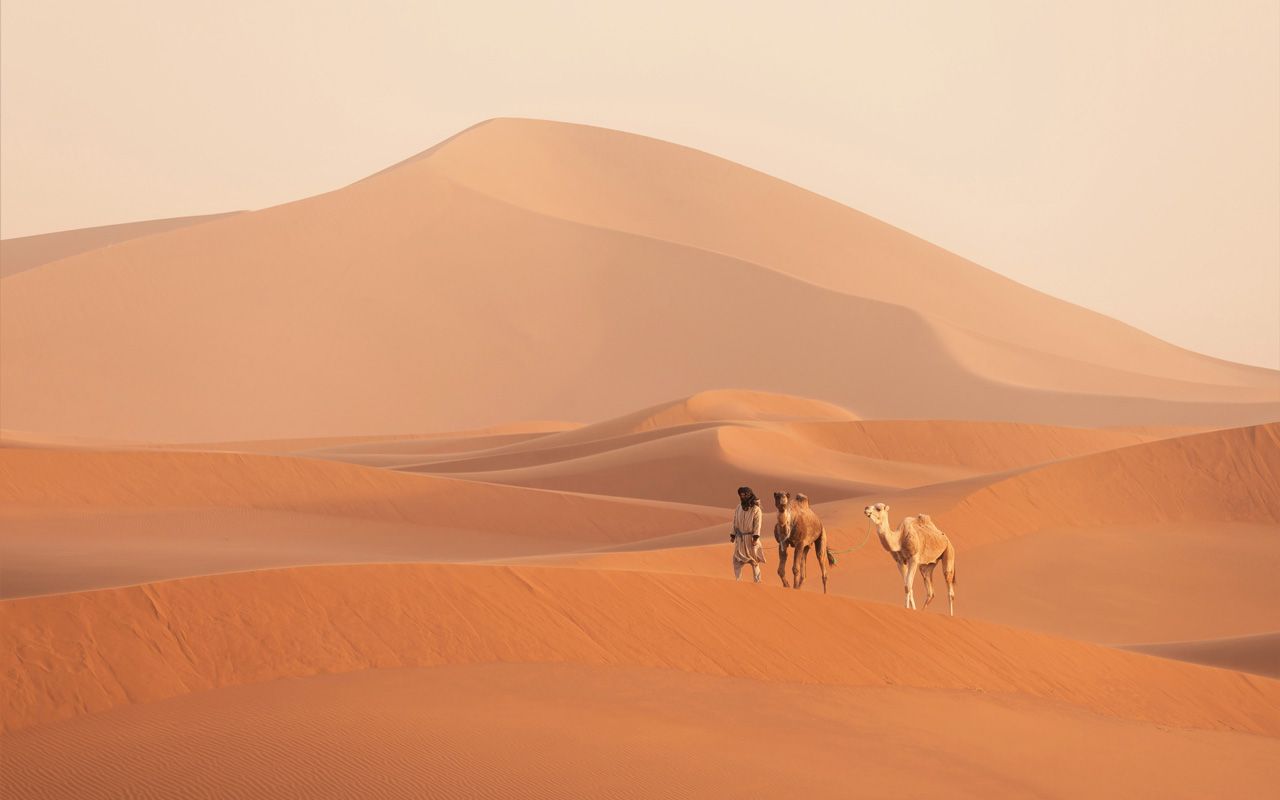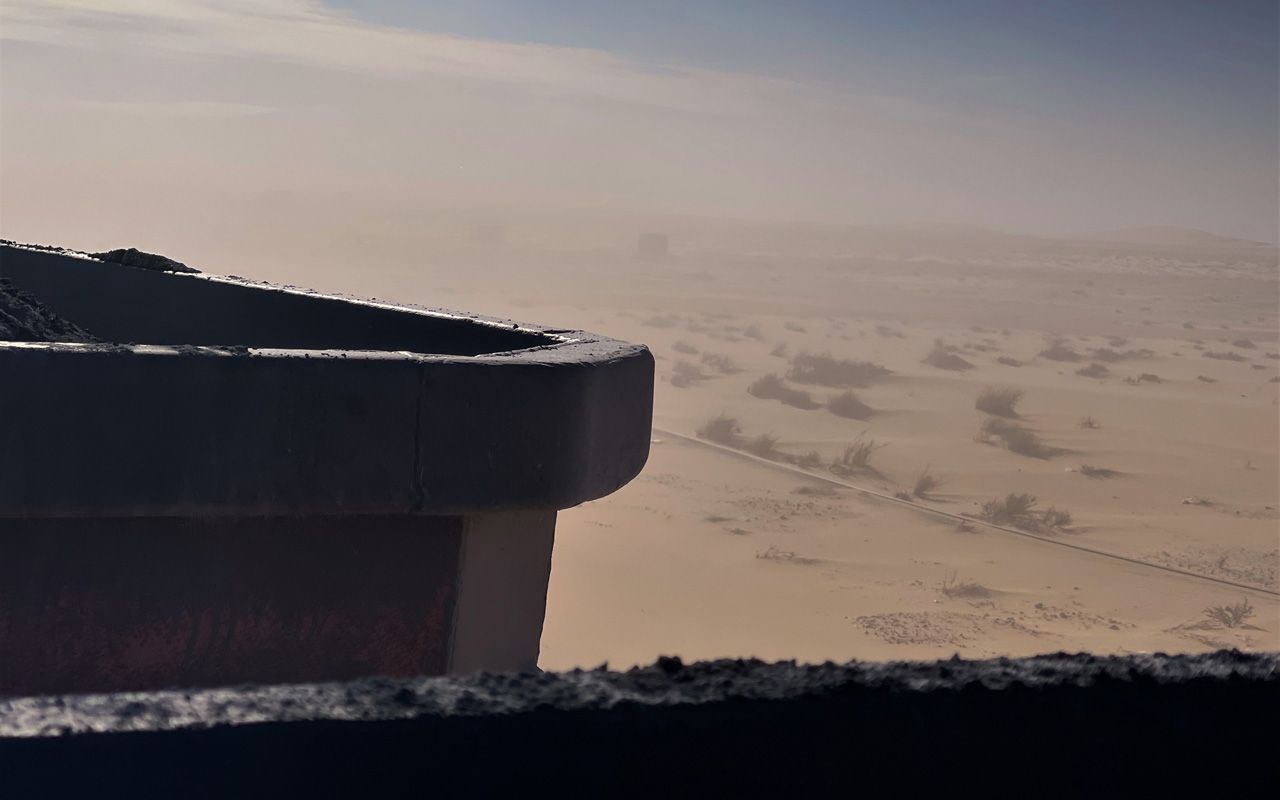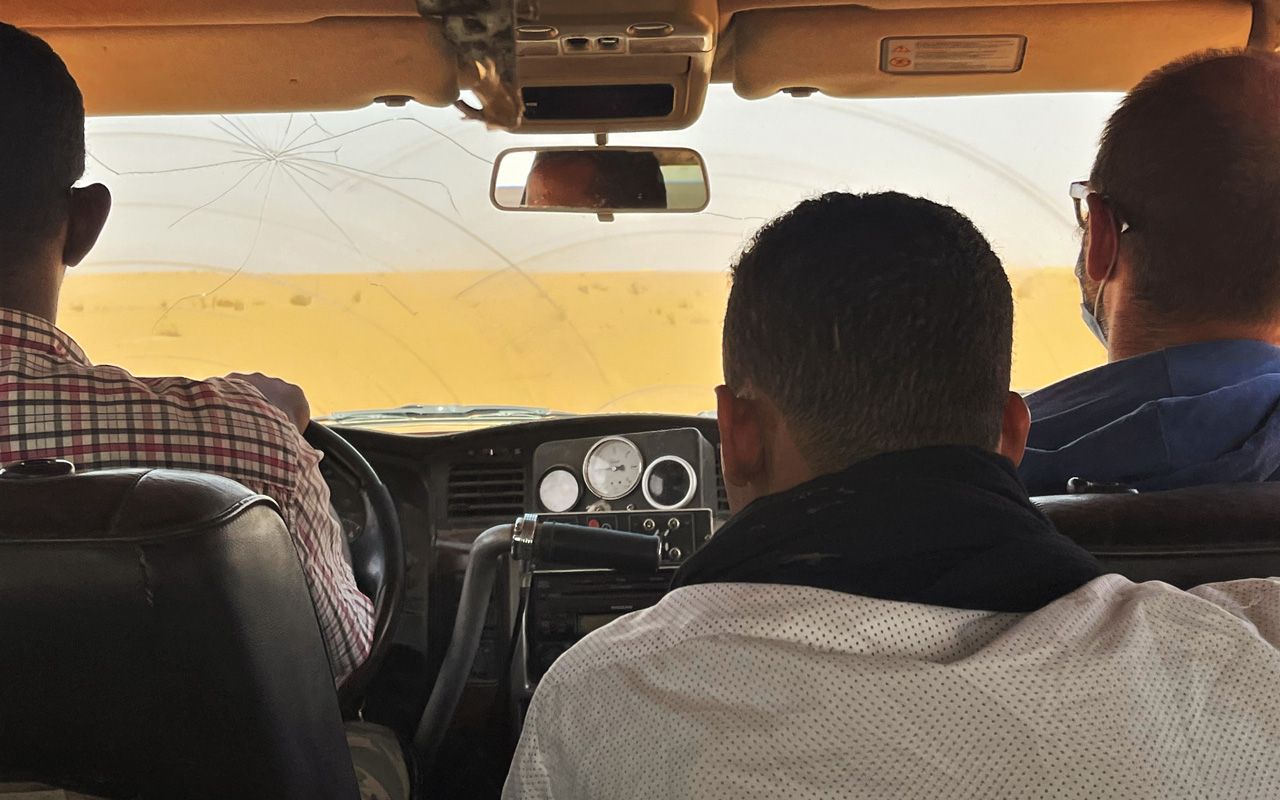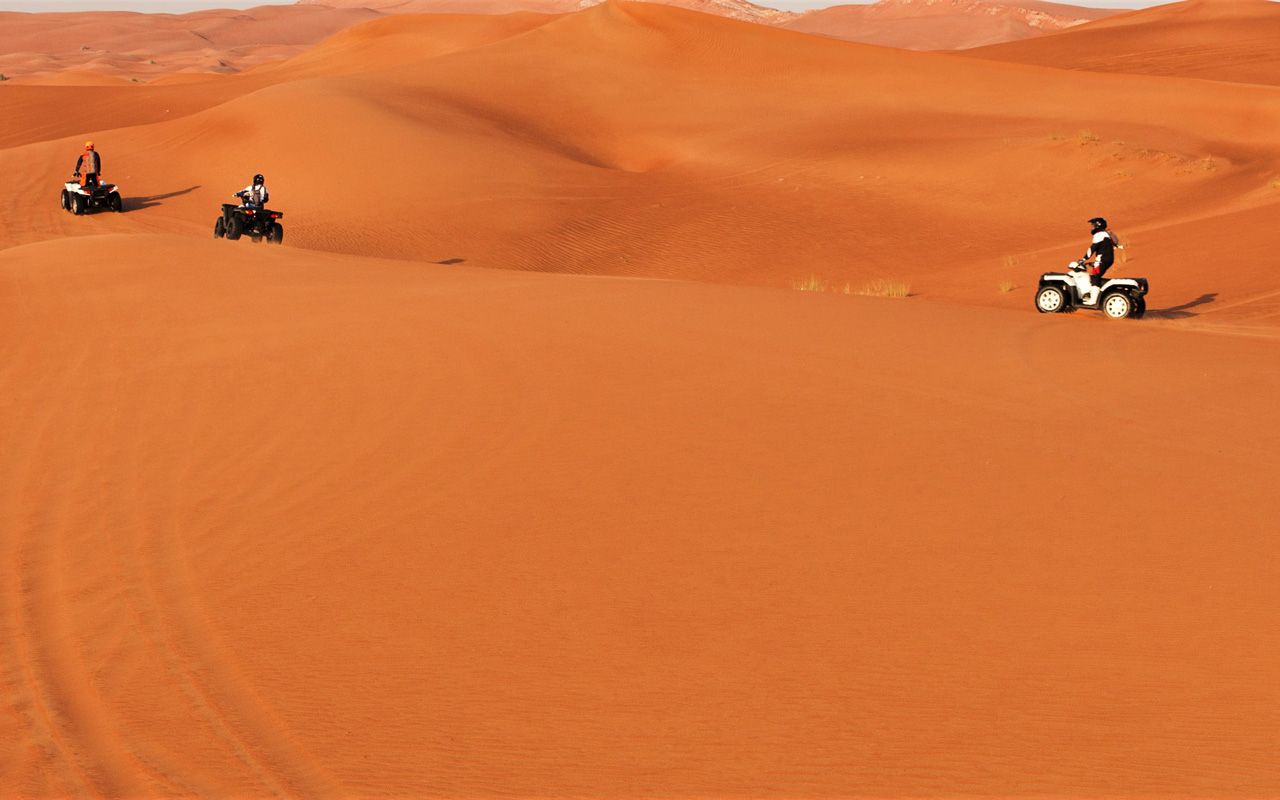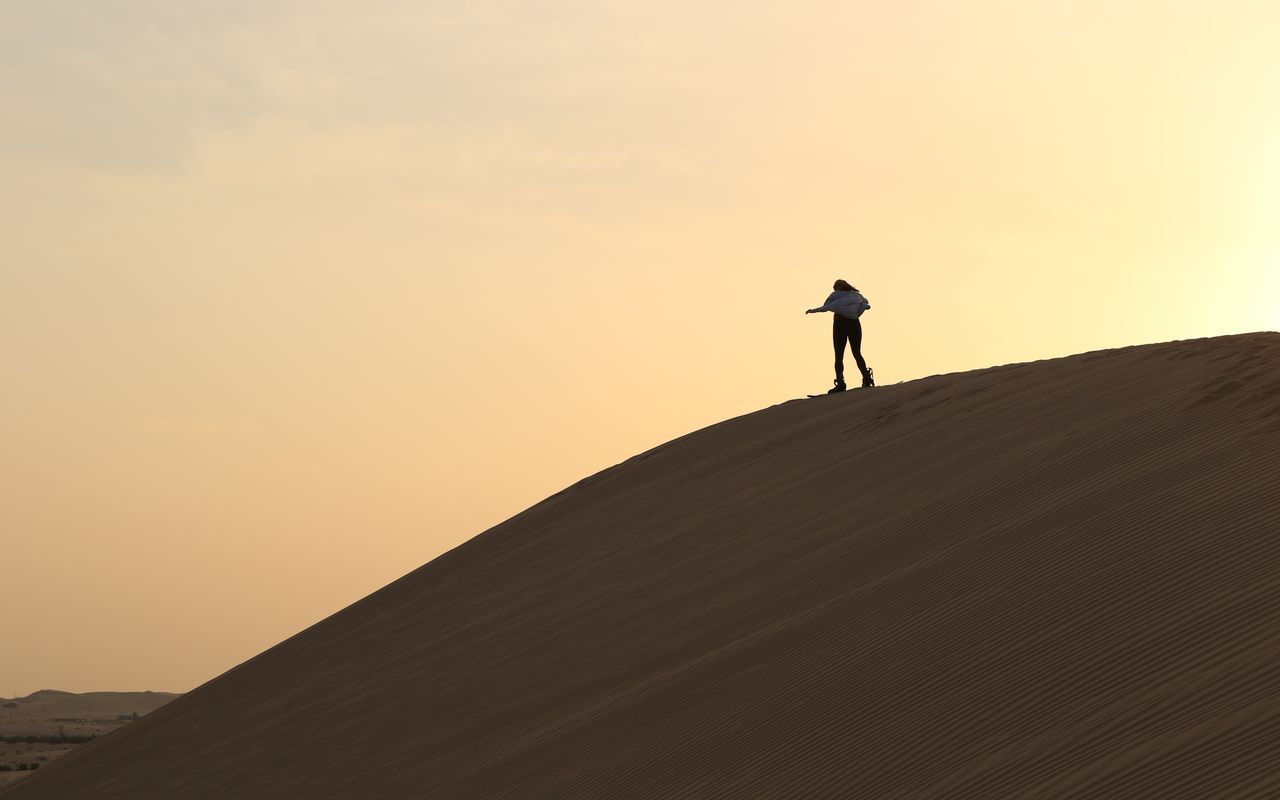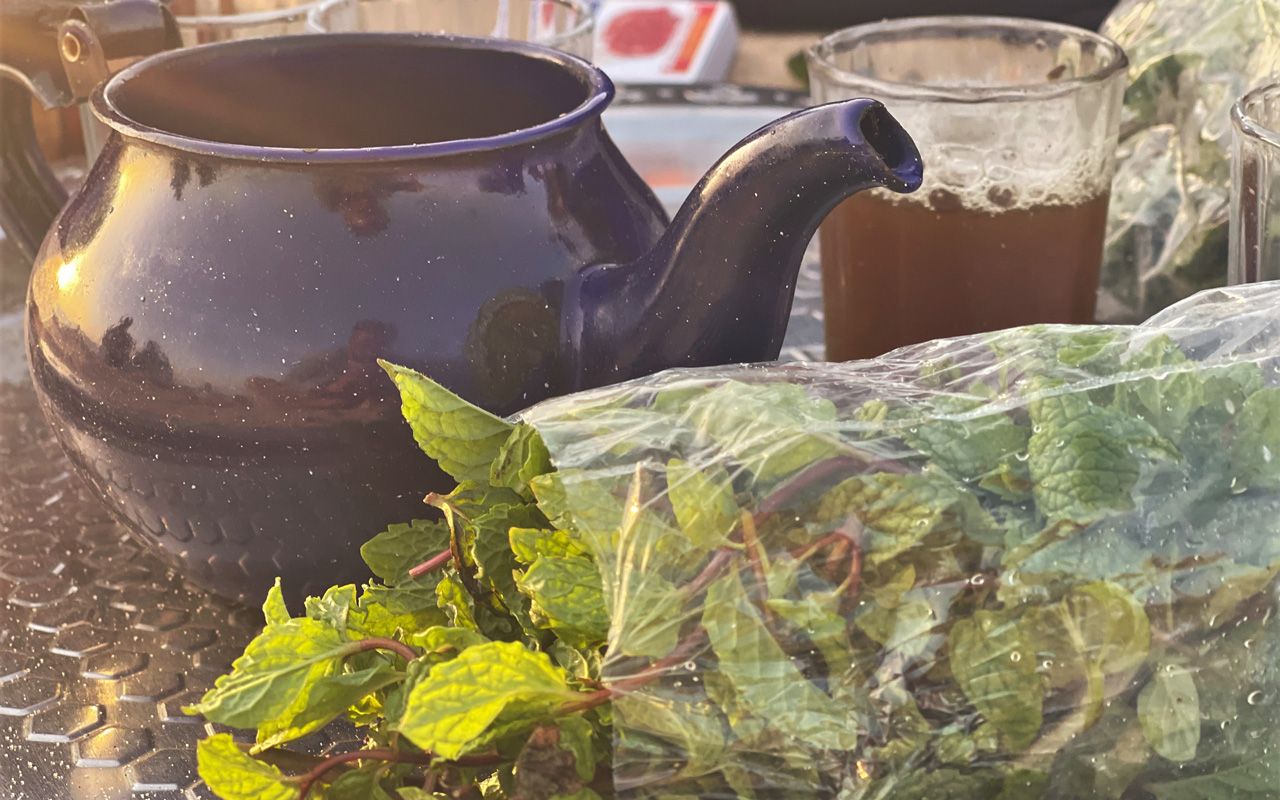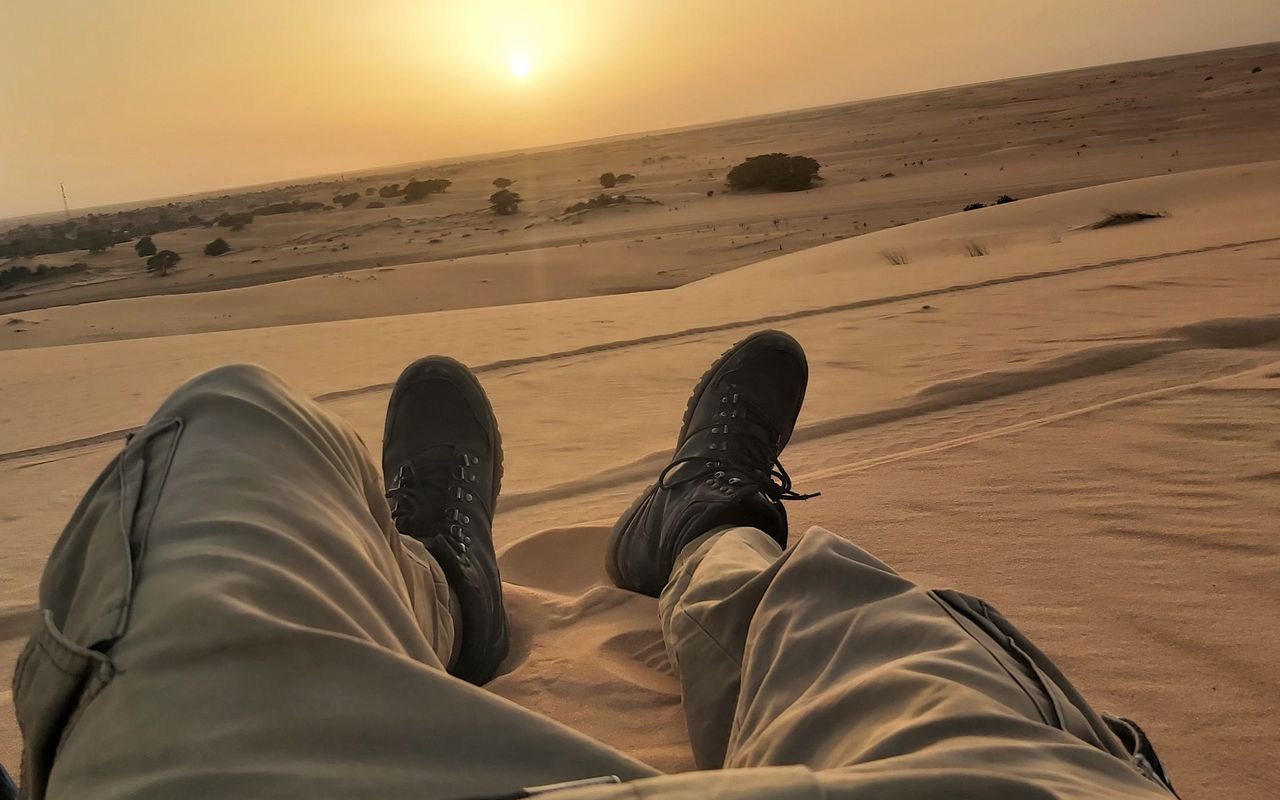Camel Trekking
Mauritania, which is three times the size of Germany, is more than 90% desert. And no doubt: in the Sahara there are many possibilities to travel a few kilometers on the ships of the desert. In addition to tea, chinguetti, the singer Dimi Mint Abba, clothes like the boubou and hawli, and of course Sunni Islam, the camel (Arabic: ǧamal) is a key factor in Mauritanian identity. Camels, specifically one-humped dromedaries, originated on the Arabian Peninsula and were introduced to West Africa at the latest with the expansion of Islam. For a long time, they were the only means of locomotion and transportation. For centuries, all trans-Saharan trade was carried out by camels. They transported salt, dates, gold and practically everything else that was traded. Even today, there is a salt caravan near Tichitt that heads south every year. Until a few decades ago, the Islamic pilgrimage, the Ḥaǧǧ, was also made by camel from Mauritania. It is said that from Chinguetti to Mecca, it took six months.
In addition, the camel also has another importance: the milk is drunk, the meat is eaten as an uncommon high end dish, the skin is made into leather. In Bilad Shinqit, there are camels in almost every village and countless places that are worth discovering by camel ride. We can organize tours in a flexible way in terms of time and place. We first ask each interested person the following question: are you interested in a camel trekking or a real horseback riding? In the first case, it is a guided tour at a leisurely pace, in the second, you ride the camel independently, even at a higher speed.
We offer camel rides mainly in the Adrar region. Everything is possible, from a camel ride of several hours to a two-day ride in an oasis, from Terjit to Mhaireth, through a circuit of several weeks (for example Chinguetti - Ouadane and back). We organize the entire tour with you. How many travelers, how many camels, how many camel drivers (guides), possibly a professional cook - everything has to be well planned in advance. We integrate camel trips into our tours or plan a completely new one, depending on your expectations.
Two points are particularly important to us. Firstly, the welfare of the animals. We pay close attention to the people we work with, the way the camels are treated and kept, and the distance we can make an animal travel per day. Secondly, a desert trip can be exciting and fun, but it should never be planned lightly. In any case, you are always accompanied by a guide who knows the area well and by modern GPS equipment. This way, nothing escapes you and, at the same time, we make sure that you don't escape us.
